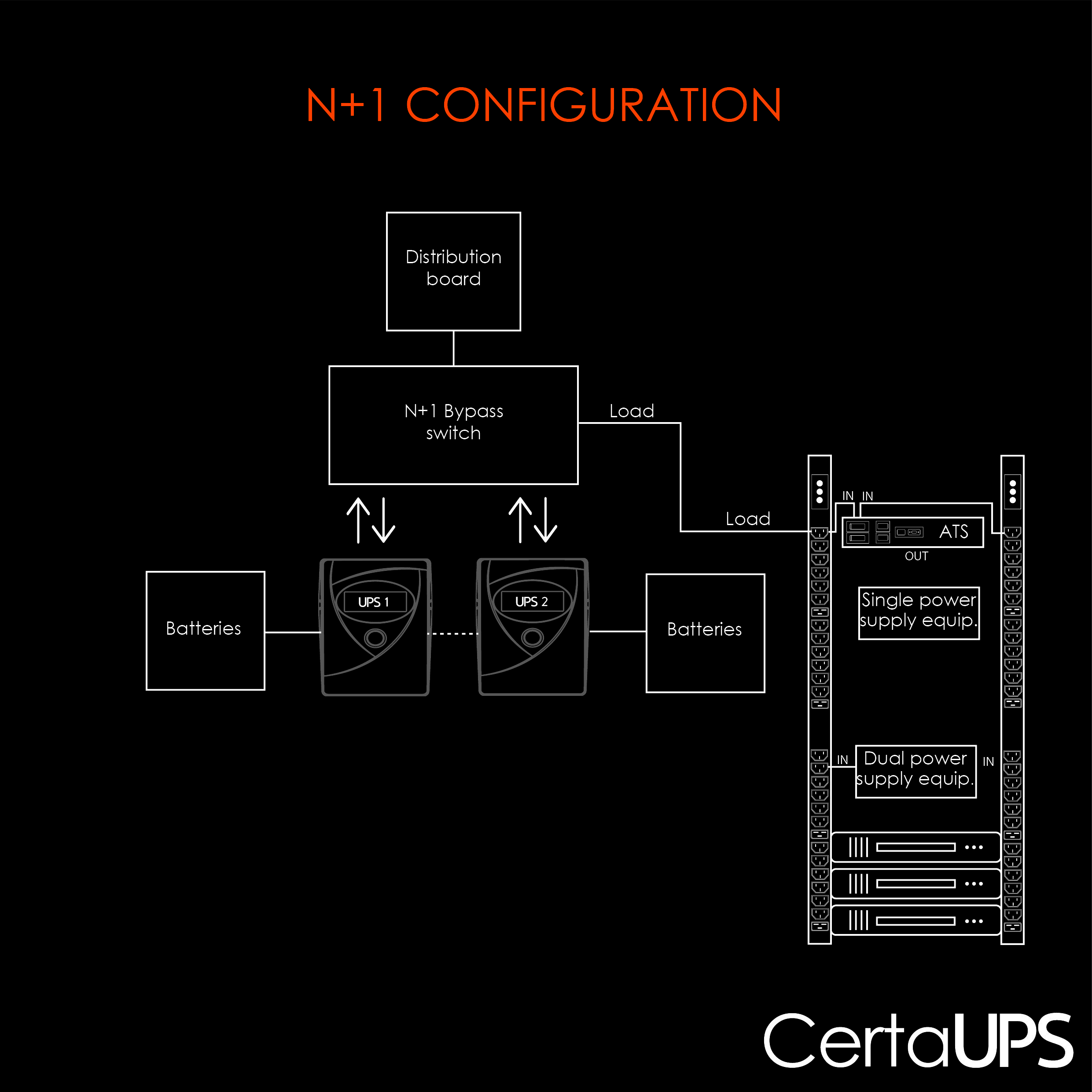
Why Redundancy Can And Should Be Used In Single Phase UPS Solutions
We spoke recently about the value of partnerships and particularly those within the channel. As a champion of single phase Uninterruptible Power Supply (UPS), CertaUPS values the importance of knowledge sharing and is committed to educating and supporting its partners with technical and commercial experience.
One particular area of focus has been on UPS redundancy. No matter whether you’re talking about hardware or software, any IT system should have built-in measures that guarantee it will continue to work if or when the unexpected happens.
The unexpected we’re talking about? Power failures, power surges, sags, spikes ….. all of which can have a major detrimental effect on business operations. They are unfortunately a regular occurrence in our modern-day electrical infrastructure therefore any organisation, that uses IT at its core, needs a system in place that is dependable enough to handle these power problems when they arise.
Yet how can this reliability be achieved?
Introducing redundancy into the power protection system helps to minimise the interruptions caused by electrical disturbances or a complete power failure. It creates a level of fault tolerance that cannot be achieved otherwise, protecting sensitive IT systems and ensuring the continuation of operations regardless of the circumstances.
What is N+1 redundancy?
N+1 UPS configuration solutions are commonly used in power systems that are designed to protect mission-critical applications; such as those found in IT systems, healthcare facilities, manufacturing processes or other sizeable business operations. The ‘N’ represents the UPS module with the +1 representing an additional or ‘spare’ UPS system.
The basic principle behind this ‘parallel redundant’ concept is to add one more UPS module than is required to deliver power to the critical load. Under normal operating conditions, each UPS will share the feed to the load equally however in the event either of the UPS units fail, the remaining module will take over, ensuring that the critical load remains fully supported at all times.
The below image shows a parallel redundant N+1 power system configuration, comprised of two UPS units – each with its own battery set. In the event of a power failure, the two UPS systems will jointly support the load by transferring to battery backup, powered via their individual battery set.
As with all sensitive electronic equipment however, there may be instances where an individual UPS unit fails. This could be caused by any one of a number of factors including component malfunction, the need to update firmware, or more commonly battery failure.
If any of these circumstances were to arise and either UPS 1 or UPS 2 were to fail, the remaining unit would go into an overload condition, transferring to bypass via the static switch, to guarantee power is still received to the load. This ensures the equipment the UPS is supporting still continues to function until normal power is restored. Think of it as a back-up to your back-up.
The N+1 configuration will also allow for routine maintenance operations to be carried out without any interruption to the load. UPS 1 can be temporarily powered down for servicing or maintenance with UPS 2 continuing to fully support the load and vice versa.
In comparison to N capacity installations, where a single UPS module is used, the N+1 configuration guarantees higher system availability and increased mean time between failure (MTBF).
What about the cap-ex costs?
Undoubtedly, use of the N+1 UPS configuration will increase the initial capital expenditure cost, due to the addition of a further UPS module. However, higher efficiency levels can be achieved with an N+1 modular system and careful power management.
In the fast-paced world we live in, where technology is everything, businesses simply cannot afford the downtime that an unreliable back-up protection strategy may bring. If your business or organisation relies heavily on systems and processes, the investment in an N+1 UPS solution may prove priceless.






